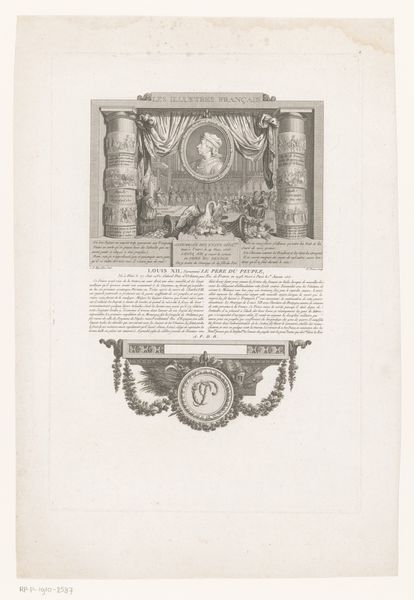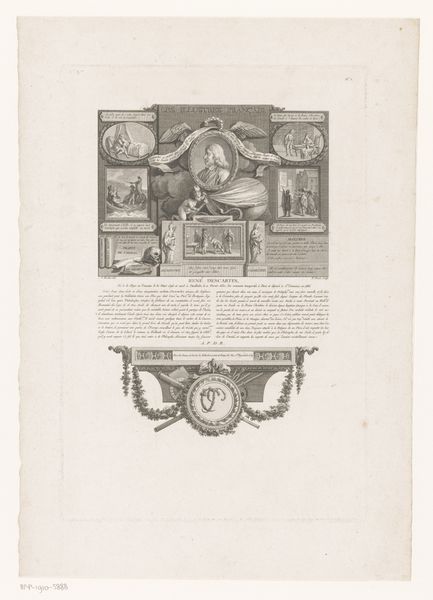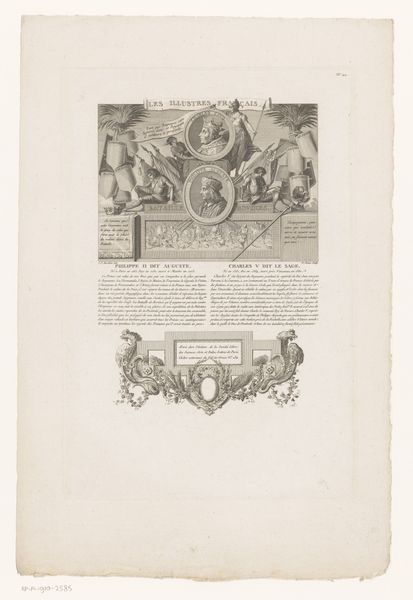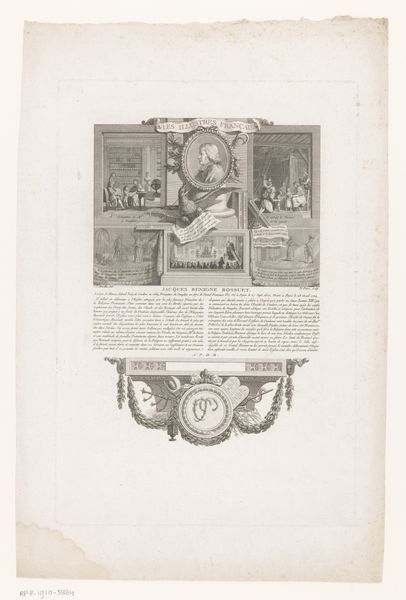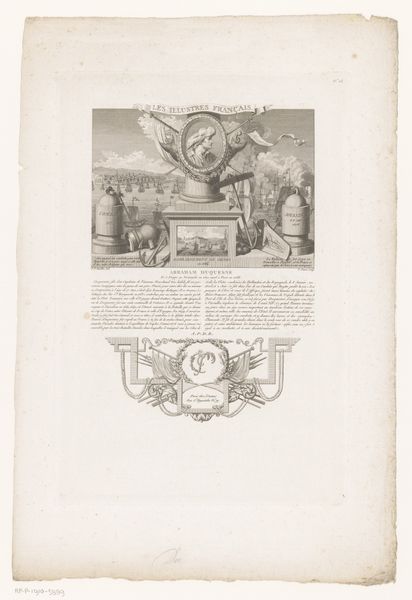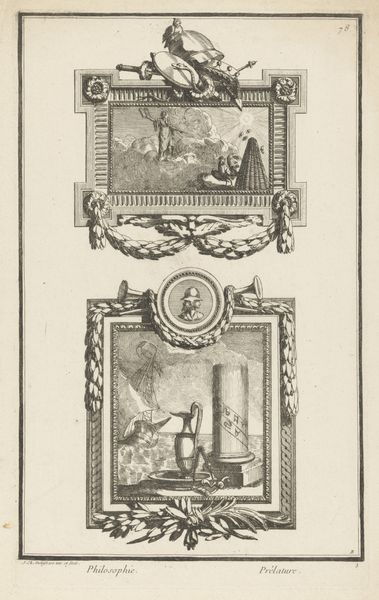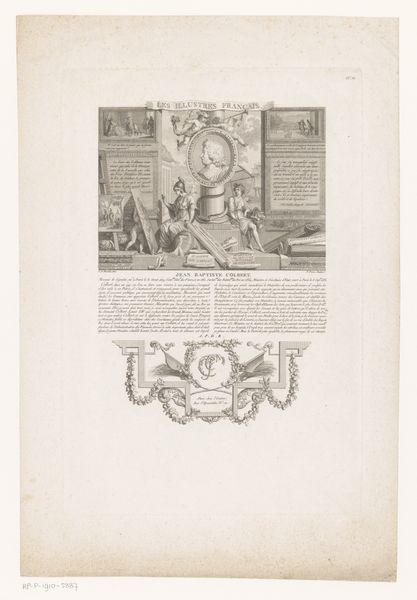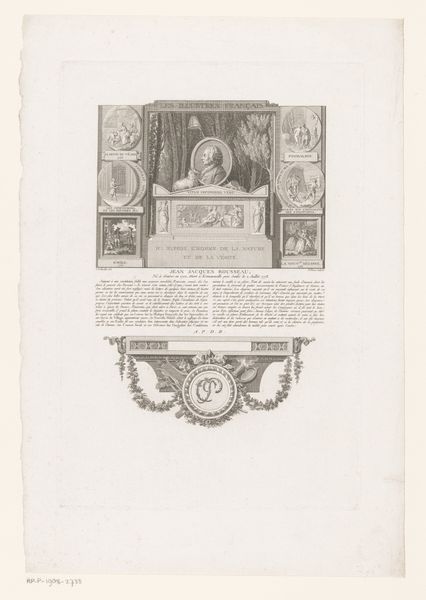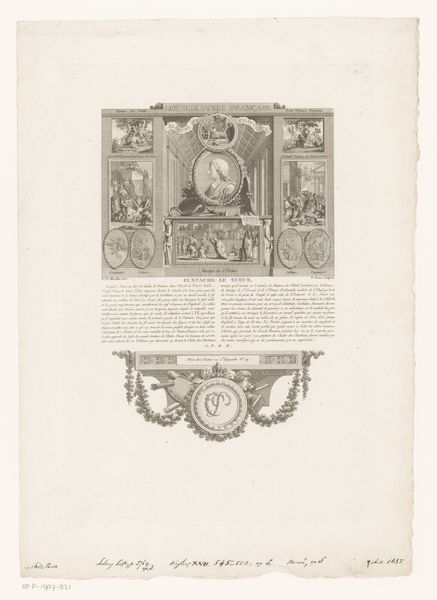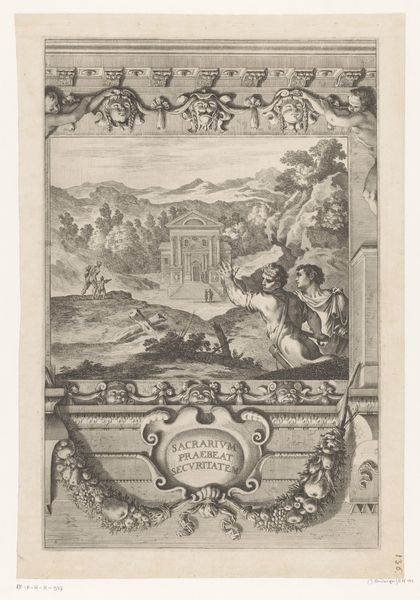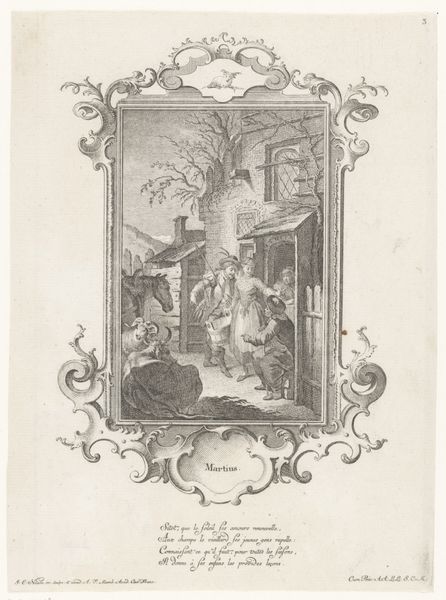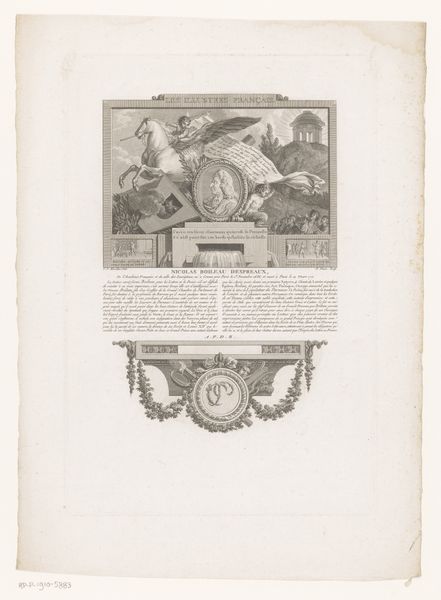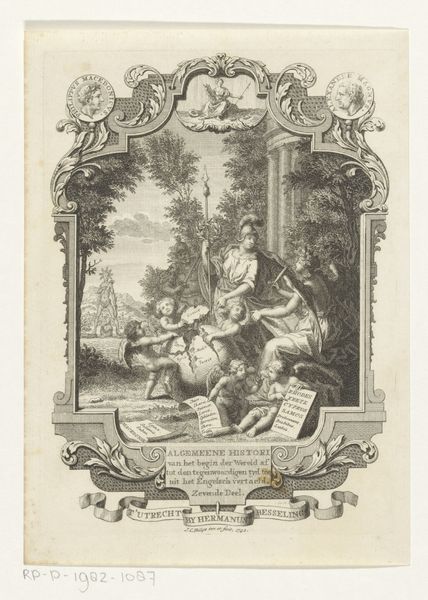
Allegorische portretten van André Le Nôtre en Jean-Baptiste de la Quintinie 1790 - 1816
0:00
0:00
drawing, print, paper, engraving
#
portrait
#
drawing
#
neoclacissism
# print
#
paper
#
line
#
history-painting
#
engraving
Dimensions: height 333 mm, width 228 mm
Copyright: Rijks Museum: Open Domain
Curator: This engraving from between 1790 and 1816, now held in the Rijksmuseum, presents allegorical portraits of André Le Nôtre and Jean-Baptiste de la Quintinie. What strikes you most about it? Editor: Immediately, it's the precision. The linework is incredibly fine, creating a sort of layered visual effect. And the overall tone is quite formal, wouldn’t you say? A testament to the Neoclassical era. Curator: Absolutely. It's a tribute to these figures, emphasizing their roles in shaping French gardens. Le Nôtre, of course, designed the gardens of Versailles, and La Quintinie was the royal gardener under Louis XIV. This print solidifies their places in French cultural history. Notice how their busts are framed? Editor: Yes, in what appears to be garden trellises, further emphasizing their connection to the land and landscape design. The vignettes below the portraits seem to represent scenes from their work—I'm drawn to how these small narrative details enrich the overall composition. Curator: Indeed. Those scenes give us glimpses into the scope and scale of their influence. This wasn't simply about cultivating plants. It was about transforming the very landscape to reflect power and order. Consider the intended audience – how would a print like this reinforce their ideas about national identity and artistic genius? Editor: That's a compelling point. I hadn't thought about it that way, but it surely elevates gardening to a high art form, worthy of immortalization in print. Technically, though, it’s fascinating how the engraver, Nicolas Ponce, created depth and texture with such controlled lines. The shadowing is beautifully done. Curator: It certainly is. It exemplifies the Neoclassical aesthetic of order, reason and idealized forms, serving both to commemorate these figures and propagate specific ideals about French identity. Editor: Looking closely has revealed the skillful blend of representation and symbolism. A fine work. Curator: Precisely. A fascinating demonstration of how cultural narratives can be subtly embedded within the formal elements of an artwork.
Comments
No comments
Be the first to comment and join the conversation on the ultimate creative platform.
